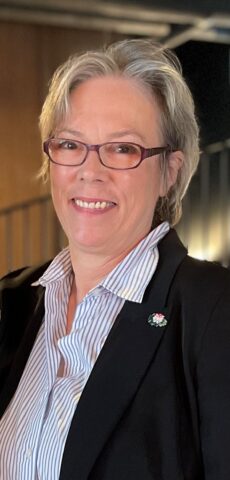Seventy-five years ago, Canada still acted like a colony. The concept of “Canadian culture” in 1950 was viewed as a misnomer. That would change within a year: in 1951, Vincent Massey delivered his federal commission’s report on how and why Canadians should celebrate domestic artists. That report is now seen as a foundational document that led to the creation of the Canada Council for the Arts, and many of the legacy arts institutions, the fruits of which we still enjoy today.

Holly Nimmons
At the same time, the winds of change were blowing through the classical community, specifically. That same year, a group of eight Canadian composers launched the Canadian League of Composers (CLC), advocating for new Canadian works to be programmed by the country’s symphony orchestras, and acting as support for a small and marginalized group that had different concerns than the songwriters then represented by SOCAN’s predecessors, CAPAC (founded in 1925) and PROCAN (founded in 1940).
In its first 15 years, the CLC successfully staged a series of concerts in Toronto, Montréal, Vancouver, and other cities, at which new Canadian works were given the platform they deserved. By 1966, there were many more regional organizations willing to take on that task, as Canada became more comfortable, both with contemporary classical forms, and the idea that Canadian composers were worth celebrating.
From there, the CLC’s mission shifted. It helped launch the Canadian Music Centre in 1959, that provided a home for a library of new Canadian works, as well as an administrative publishing body handling royalties for its members. The CLC continues to have an arm’s-length relationship with the Centre, acting as a more political arm: lobbying for composers’ rights, fair compensation, radio play, and academic study.
“A lot of good seeds have been sown for the future” – August Murphy-King
“Collaboration is really important,” says CMC CEO Holly Nimmons, daughter of CLC co-founder Phil Nimmons, citing a working group comprised of the two organizations and SOCAN, that meets regularly. “That’s a way for us to identify overlapping issues that we can all support through marketing and communications.” For years, as with the Centre, the CLC’s primary source of funding was the SOCAN Foundation, which also provides operational funding for groups like the Screen Composers Guild of Canada, and the Canadian Electroacoustic Community.

August Murphy-King
Current CLC general manager August Murphy-King says, “When I took over in 2022… we reached out to [SOCAN CEO] Jenn [Brown and [SOCAN President] Marc Ouellette, and they were, like, ‘Let’s start to build a relationship.’” Things have improved greatly since, he says. “A lot of good seeds have been sown for the future.”
The CLC’s general mission of getting Canadian music on the map – one that it shares with SOCAN – has been a success, and lots of Canadian composers have very successful reputations in Europe, the U.S., and Asia. “A lot of the SOCAN board members, even if they’re not classical composers, have a background in classical music,” says Murphy-King. “They respect, understand, know, and like classical music. They’re very keen on having us [be a] part of their ecosystem.”
The core mission of both SOCAN and CLC is, of course, to support creators and advocate for their best interests: songwriters of all stripes are in the same boat.
“Over time, helping composers get paid fairly; that’s been our biggest win,” says Murphy-King. “Especially for younger composers, when they’re starting out and filing a grant application, they don’t have a clue how to make sure they get paid fairly. It’s the arts – one of the ultimate exploitation businesses. It’s very easy to get desperate young artists to do stuff for free, and we make sure that doesn’t happen.”